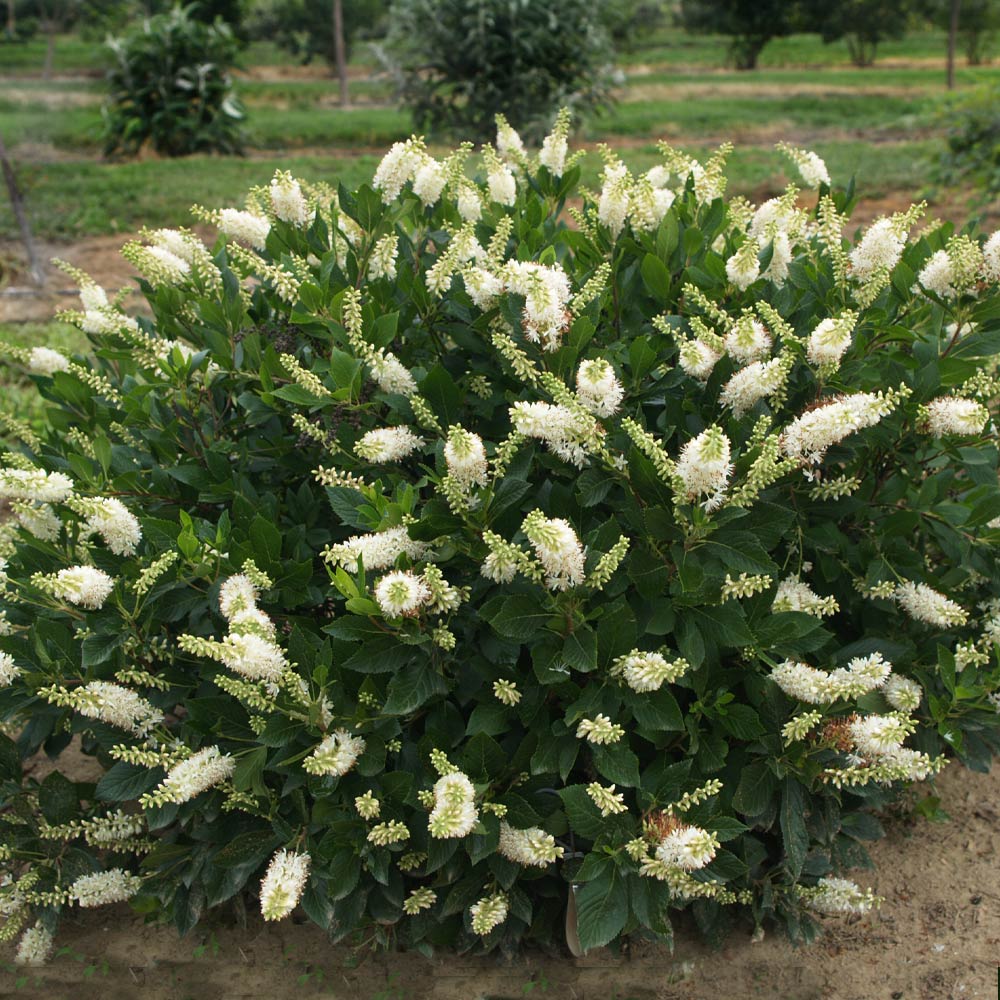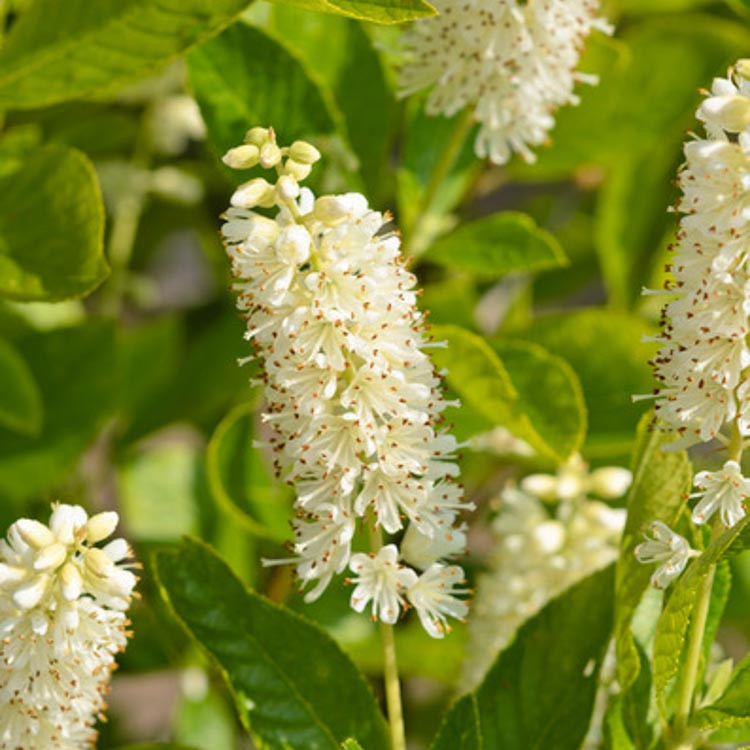Clethra Alnifolia: A Hummingbird Magnet
Clethra alnifolia: A Hummingbird Magnet
Clethra alnifolia, commonly known as summersweet or sweet pepperbush, is a deciduous shrub that is native to eastern North America. It is a popular choice for gardens because of its fragrant flowers, which attract hummingbirds and other pollinators.
Summersweet is a versatile plant that can be grown in a variety of settings. It is tolerant of a wide range of soil conditions and can be grown in full sun or partial shade. It is also relatively deer- and rabbit-resistant.
The flowers of summersweet are white or cream-colored and are arranged in panicles that can reach up to 12 inches in length. The flowers bloom in late summer and early fall, and they have a sweet, spicy fragrance that is especially attractive to hummingbirds.
In addition to its attractive flowers, summersweet also has attractive foliage. The leaves are oval-shaped and have a dark green color. In the fall, the leaves turn a golden yellow color, which adds to the beauty of the plant.
Summersweet is a relatively low-maintenance plant. It does not require a lot of water or fertilizer, and it is relatively resistant to pests and diseases. However, it is important to prune summersweet regularly to keep it in shape.
If you are looking for a beautiful and easy-care plant that will attract hummingbirds to your garden, summersweet is a great option.
Main Content
Planting and Care
Summersweet is a relatively easy plant to grow. It can be planted in full sun or partial shade, and it is tolerant of a wide range of soil conditions. However, it prefers moist, well-drained soil.
Summersweet does not require a lot of fertilizer. A light application of fertilizer in the spring will help to promote flowering.
Summersweet is a relatively drought-tolerant plant, but it will benefit from regular watering during the summer months.
Pruning
Summersweet should be pruned in late winter or early spring. The goal of pruning is to remove dead, diseased, or damaged branches. You can also prune summersweet to shape it or to keep it in size.
Pests and Diseases
Summersweet is relatively resistant to pests and diseases. However, it can be susceptible to aphids, scale, and spider mites. If you see any pests on your summersweet, you can treat them with an insecticidal soap or neem oil.
Companion Planting
Summersweet can be planted with a variety of other plants, including other shrubs, perennials, and annuals. Some good companion plants for summersweet include:
- Butterfly bush
- Coral bells
- Daylilies
- Lavender
- Ornamental grasses
- Phlox
- Salvia
- Turtlehead
Wildlife Attraction
Summersweet is a popular plant for attracting hummingbirds and other pollinators. The flowers of summersweet are a good source of nectar, and the plant's foliage provides shelter for insects.
In addition to hummingbirds, summersweet can also attract butterflies, bees, and other insects. These insects are important pollinators, and they help to ensure that summersweet and other plants are able to reproduce.
Conclusion
Summersweet is a beautiful and easy-care plant that is a great addition to any garden. It is a magnet for hummingbirds and other pollinators, and it can be grown in a variety of settings. If you are looking for a low-maintenance plant that will add beauty and wildlife to your garden, summersweet is a great option.
Clethra alnifolia hummingbird, also known as summersweet, is a beautiful and fragrant shrub that is native to North America. It is known for its long-lasting white flowers, which bloom in mid- to late summer. The flowers are very attractive to bees, butterflies, and other pollinators, and they also have a sweet, honey-like scent that is said to be reminiscent of linden trees.
If you are looking for a low-maintenance, drought-tolerant shrub that will add beauty and fragrance to your garden, then clethra alnifolia hummingbird is a great option. It is relatively easy to care for, and it can be grown in a variety of soil types and conditions.
For more information about clethra alnifolia hummingbird, I recommend visiting Garden Wiki. This website has a wealth of information about the plant, including its history, care requirements, and planting tips.
FAQ of clethra alnifolia hummingbird
Question 1: What is Clethra alnifolia hummingbird?
Answer: Clethra alnifolia hummingbird is a variety of Clethra alnifolia, also known as summersweet. It is a deciduous shrub that is native to eastern North America. It is known for its fragrant white flowers that bloom in late summer and early fall. The flowers are a favorite of hummingbirds, hence the name.
Question 2: How to grow Clethra alnifolia hummingbird?
Answer: Clethra alnifolia hummingbird is easy to grow in most parts of the country. It prefers full sun to part shade and moist, well-drained soil. It is tolerant of a wide range of soil pH levels, but it prefers acidic soils.
Question 3: How to care for Clethra alnifolia hummingbird?
Answer: Clethra alnifolia hummingbird is a low-maintenance shrub. It does not require much fertilizer, but it does benefit from an annual application of compost or manure. It is also important to water the shrub regularly, especially during the summer months.
Question 4: How to attract hummingbirds to Clethra alnifolia hummingbird?
Answer: Hummingbirds are attracted to Clethra alnifolia hummingbird for its fragrant flowers. You can attract even more hummingbirds to your garden by planting other nectar-rich plants, such as bee balm, columbine, and butterfly bush. You can also put out a hummingbird feeder.
Question 5: What are the pests and diseases that affect Clethra alnifolia hummingbird?
Answer: Clethra alnifolia hummingbird is a relatively pest- and disease-free shrub. However, it can be susceptible to scale, aphids, and powdery mildew. If you notice any pests or diseases on your shrub, you can treat them with insecticidal soap or neem oil.
Image of clethra alnifolia hummingbird
5 different images of "clethra alnifolia hummingbird" from Pinterest:
- A close-up of a hummingbird drinking nectar from a clethra alnifolia flower.

- A clethra alnifolia shrub in full bloom, with hummingbirds flitting among the flowers.

- A hummingbird perched on a clethra alnifolia flower, its wings outstretched.

- A group of hummingbirds feeding on clethra alnifolia flowers.

- A clethra alnifolia flower with a hummingbird's reflection in the petals.

Post a Comment for "Clethra Alnifolia: A Hummingbird Magnet"